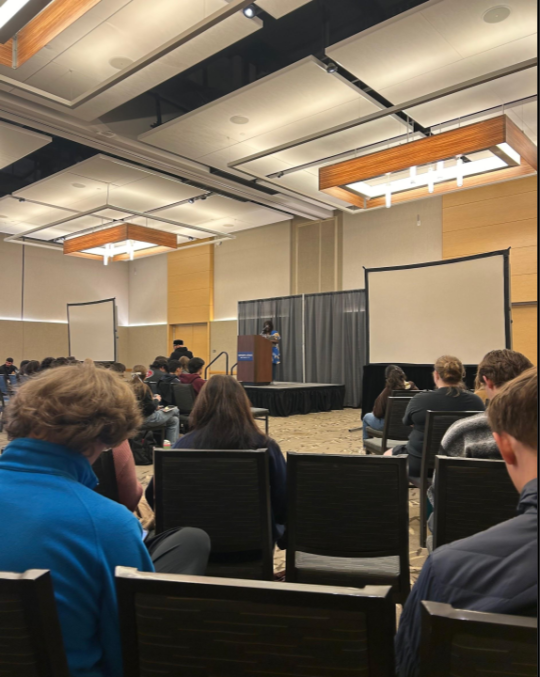Black Labor Reimagined Discussion
Author, Liam Teuber
On February 12th, the Sonoma State University Student Center Ballroom became the site of an insightful and thought-provoking conversation led by Dr. Kim Hester Williams, an expert in historical narratives about racial injustice, as well as a professor here at Sonoma State. In her engaging talk, Dr. Hester Williams delves deep into the complex long-lasting effects of slavery, specifically the effects it has on contemporary racism, drawing many connections to how the brutal institution of slavery still reverberates and creates inequality in today’s social structures, mindsets, and institutions.
Dr. Hester Williams’s introduction to the lecture touched on key texts and pieces of literature, such as Stephanie Smallwood’s Saltwater Slavery, which explores the transatlantic slave trade, and the brutal and inhumane journey endured by enslaved Africans across the Middle Passage. Throughout the lecture, Dr. Hester Williams paints a vivid picture of the brutality of slave ship life—where slaves were tightly packed, suffering from disease, abuse, and inhumane conditions, leading Dr. Hester Williams to ask, “Where was the agency to be found?” Dr. Hester Williams explains that for slaves there was no agency to be found, that slaves were subject to these extreme conditions because they were not considered human by their captors, while also explaining how this traumatic history had a direct hand in shaping contemporary racial hierarchies today.

A central part of Dr. Hester Williams’s talk was her analysis of how art, particularly poetry and music, can serve as powerful tools to process and communicate the impacts of slavery in different ways. Drawing upon contemporary artists, Dr. Hester Williams shifted focus to a performance by Kendrick Lamar at the 2016 Grammy Awards, which captivated audiences with its raw emotional power. In her analysis of the song, she broke down the deeper meanings embedded within Kendrick Lamar’s performance of “The Blacker the Berry,” a song that has layers of complex identity issues as well as some societal criticism.
Kendrick Lamar’s Grammy performance was a multi-layered visual and auditory experience that confronted racial injustice, black identity, and the legacy of slavery. Dr. Hester Williams pointed out how Kendrick Lamar, through his lyrics and choreography, forces listeners to confront the painful realities of black experience in America. After the performance was shown, the audience seemed intrigued yet maybe a bit thrown off by the song's deliberately controversial lines. As Dr. Hester Williams explained, this performance serves as a refusal to accept the labels of stereotypes imposed by society. She also explained the song’s meaning is often misunderstood and can be confusing to different audiences. It's meant to challenge the listener to understand the complexity of black identity, not as an identity shaped by external forces in society. As stated by Dr. Hester Williams in the discussion, "Kendrick Lamar’s performance was not just entertainment-it was an act of resistance, a way to claim agency and force people to see the realities of systemic racism." This performance was a powerful example of the impact/attention art, music, and dance can bring to an issue that needs to be addressed.
Overall, this lecture served as a powerful reminder of the importance of understanding the history of slavery—not only as a way of paying tribute to those who suffered but as a critical step toward dismantling the systems of racial injustice that continue to shape American society. This discussion highlighted the need to address painful history, allowing us to understand the deeper roots of contemporary struggles for equality and justice. For all who attended, Dr. Kim Hester Williams’s lecture was not just an academic exercise, but a call to action—to continue learning, to listen to the silenced voices of the past, and to remember that history has much to teach us about the present.
Personally, attending this discussion made me feel deeply reflective and perhaps even a little unsettled, as the discussion confronted the harsh realities and lasting effects of slavery, and how this shapes contemporary racism in modern-day society. At the same time, I felt a sense of admiration and respect for the resilience of those who fought against slavery and made steps towards reform possible. It’s also worth noting Dr. Kim Hester Williams’s use of poetry, music and art to connect with contemporary struggles today. Whether it’s a story told through a poem or a choreographed dance in Kendrick Lamar’s performance, I feel that these mediums of art can challenge perspectives, inspire, and demand attention to these critical issues.



